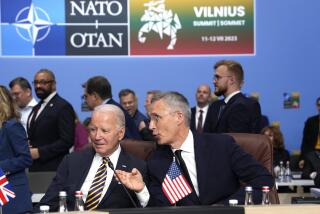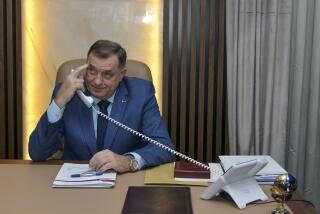Key Figures in Kosovo Conflict
- Share via
Yugoslav President Slobodan Milosevic
By exploiting Serbian nationalism when Yugoslavia’s gradual disintegration began, Milosevic, 57, has remained in power through wars in Croatia and Bosnia-Herzegovina. He considers the Western-brokered peace agreement for Kosovo tantamount to handing the province over to the ethnic Albanian majority, which could cause nationalists to turn against him.
Kosovo Liberation Army
It began as a ragtag alternative to nonviolent opposition by moderate ethnic Albanians to Serbian rule in Kosovo but has grown into a full-fledged guerrilla army. It lacks the firepower and numbers to battle the Yugoslav army and Serbian police head-on.
Ibrahim Rugova
The moderate ethnic Albanian leader, 54, has long been favored by the West for his nonviolent opposition to Serbian rule in Kosovo. But his support dwindled as ethnic Albanians became convinced that only warfare could bring them independence.
Javier Solana
NATO secretary-general who authorized the alliance’s airstrikes against Yugoslavia. He has led the North Atlantic Treaty Organization since Dec. 19, 1995--the day after U.S. troops began arriving in Bosnia in the largest deployment Europe had seen since World War II. Solana, 56, is the scion of an illustrious liberal Spanish family.
Gen. Wesley K. Clark
NATO’s supreme allied commander and head of U.S. forces in Europe. He is directing the military action against Yugoslavia. Clark, 54, helped broker the 1995 Bosnia peace accord in Dayton, Ohio. Before NATO, he was in charge of the U.S. Southern Command in Panama, which oversees military operations in Latin America.
More to Read
Sign up for Essential California
The most important California stories and recommendations in your inbox every morning.
You may occasionally receive promotional content from the Los Angeles Times.










